
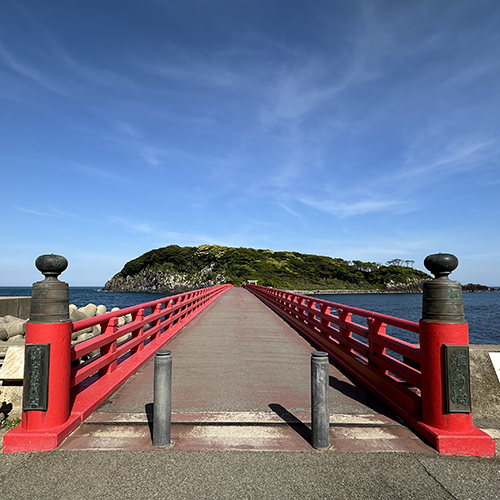
The first Oshima Bridge was completed in the year 1937.
The current bridge, which is the second generation, was completed in 1981 and spans a length of 224 meters.
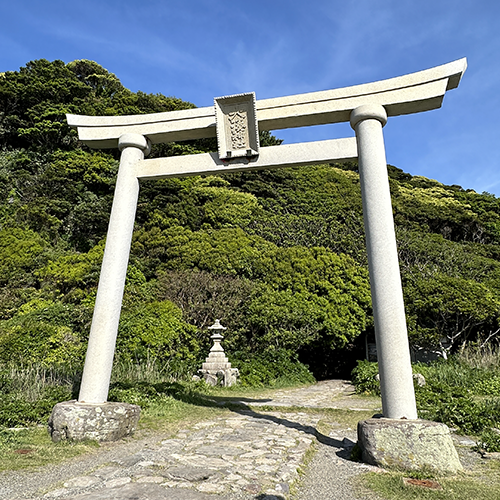
A torii gate built in 1927.
It is unclear what material was used before, but a torii gate of similar size is believed to have existed.
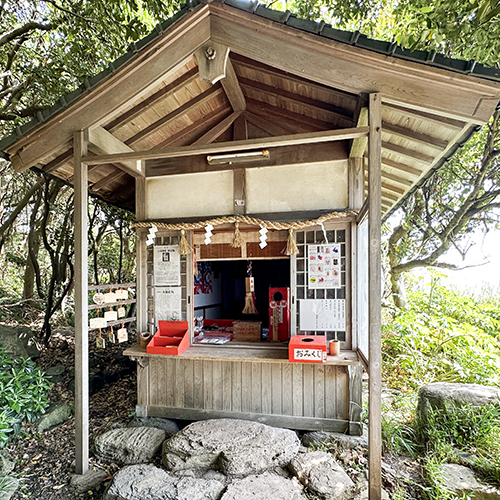
The place where amulets, fortune slips, ema (votive tablets), and other items are offered at Omori Shrine.
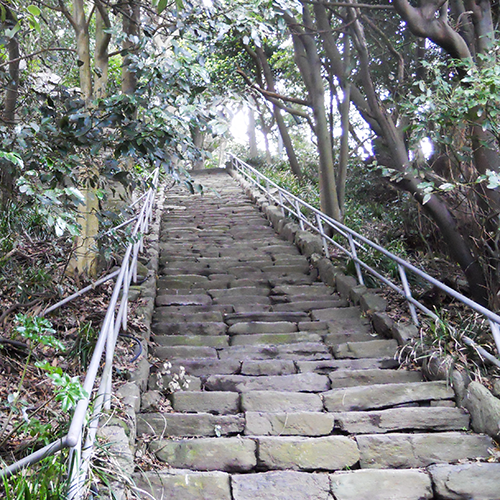
This stone staircase has 78 steps to the top.
From there, there are 14 steps to the left.
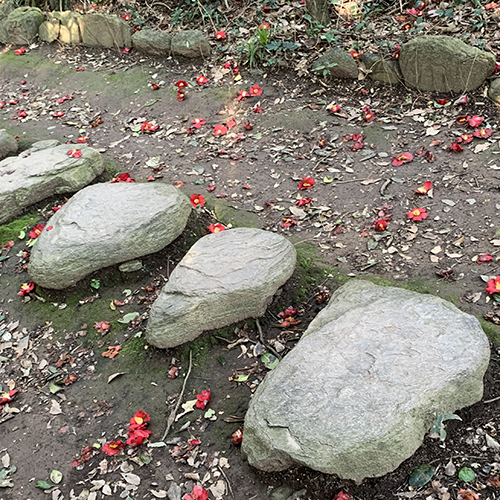
Tall camellia trees that are hundreds of years old grow wild on this island.
From February to early May, you can see fallen camellia flowers on the streets.
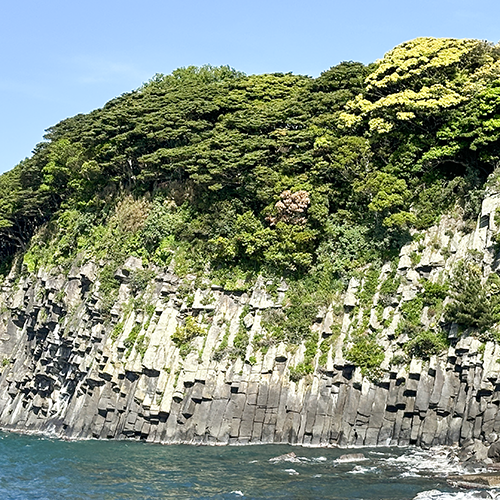
The columnar jointing at Tojinbo appears to ascend from bottom to top, while at Oshima, it seems to descend from top to bottom, resembling a beehive.
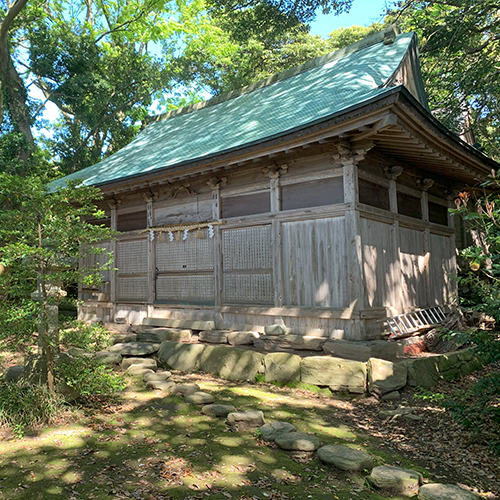
This shrine was once destroyed by fire, but was rebuilt in 1621.
This building, which is over 400 years old, is designated as a cultural property of Fukui Prefecture.
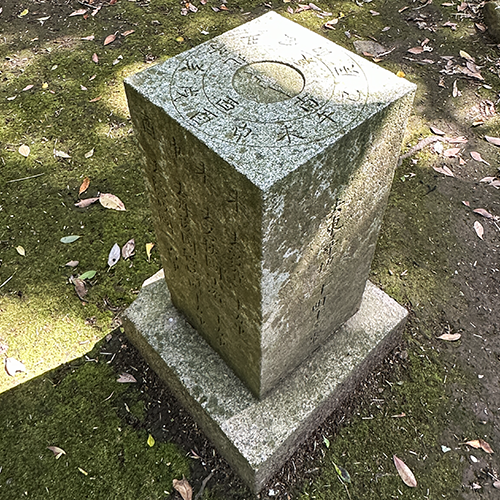
A stone monument indicating the compass direction and the approximate distance to the specified location.
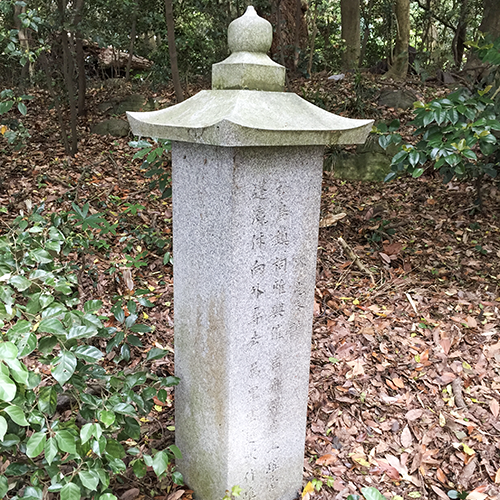
Akechi Mitsuhide's poem on the monument reads:
'If one sails to the island of the gods, there's no need to journey to the distant legendary land where immortals dwell.
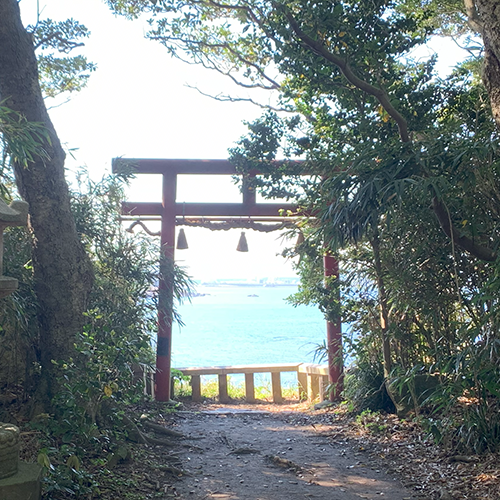
A torii gate located in front of Ominato_jinjya, overlooking the sea from the quay.
There is an observation deck beyond this point where you can see Tojinbo and the view to the south.
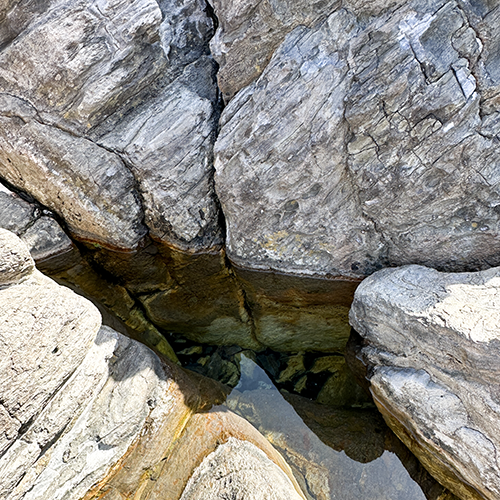
Oshima has freshwater springs gushing from its underground.
But the path to this location is interrupted with rocky areas lacking a defined trail.
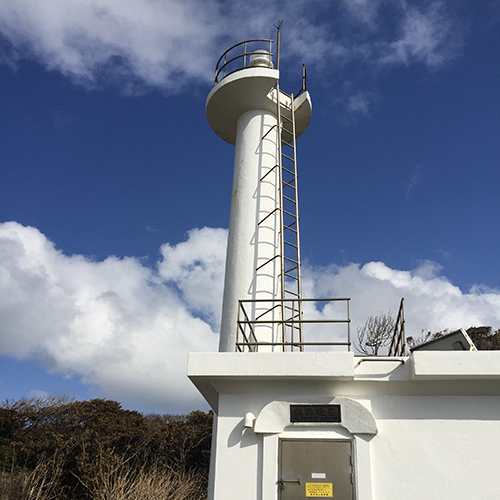
A lighthouse that was first lit in 1954 and is still used as a navigational marker for maritime navigation.
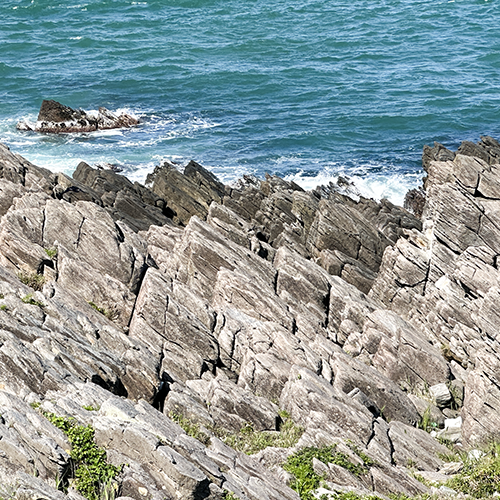
Oshima's backside features sheet-like andesite rocks extending from west to north.
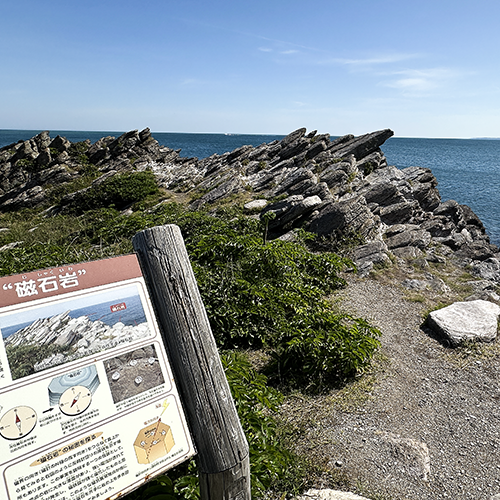
Some rocks on the island possess magnetic properties.
Not all rocks exhibit this trait, but in this area, multiple magnetic rocks can be found.
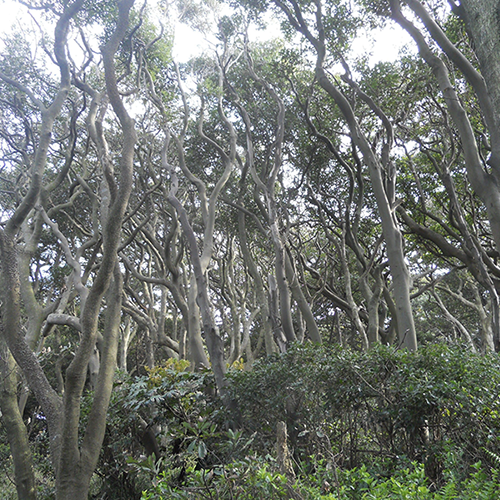
Yabunikkei(Japanese wild cinnamon) is more resistant to sea breezes than tabunoki/sudajii, so it grows in clusters in the north of the island where there is strong sea breeze.